Flag Day 2023 — Wednesday, June 14th
A BRIEF HISTORY OF THE US FLAG
When the American Revolution broke out in 1775, the colonists weren’t fighting under a single flag—most regiments participating in the war for independence fought under their own flags. In June 1775, the Second Continental Congress met in Philadelphia and created the Continental Army to battle its colonial oppressors.
This led to the authorization of the first national American flag, the Continental Colors. Also called the “Grand Union Flag,” “Congress Flag,” “Cambridge Flag,” and the “First Navy Ensign,” it was first hoisted on December 3, 1775, by naval commander John Paul Jones aboard the USS Alfred. For some, this flag, comprised of 13 red and white alternating stripes and a Union Jack in the corner, was too similar to that of the British Union Jack. Legend has it that George Washington, commander-in-chief of the unified colonial fighting force, believed that flying a flag even remotely similar to that of the British was not appropriate for the revolutionary effort, so he turned his efforts towards creating a new symbol of freedom for the fledgling nation.
The first national American flag
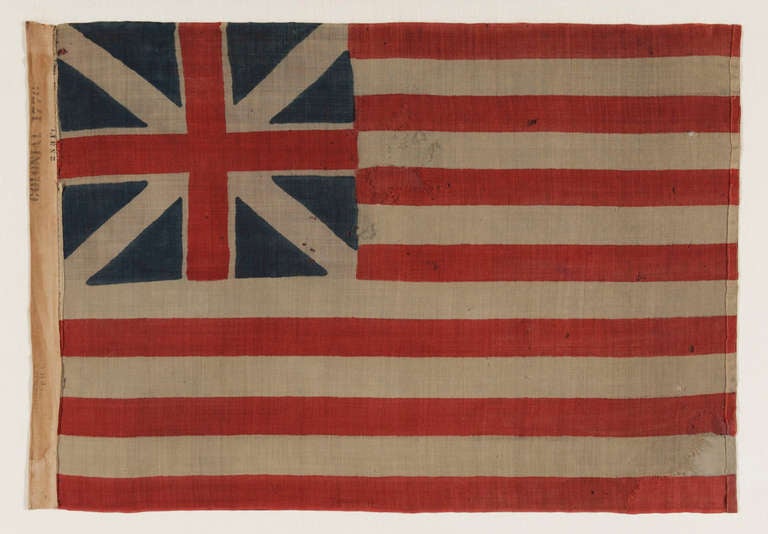
Throughout 1776, a number of battles, raids, and skirmishes—as well as other significant historical events, the most crucial being the Declaration of Independence—essentially tabled Washington’s efforts and the issue of a new flag. On June 14, 1777, the Second Continental Congress passed a resolution stating that “the flag of the United States be 13 stripes, alternate red and white” and that “the union be 13 stars, white in a blue field, representing a new constellation.”
State militias (“Minutemen”) and troops from Continental Army state regiments fought under different variations of the new flag as they met the definition of the Flag Resolution of 1777. An example of such a variation is the Cowpens Flag—the Continental Army’s 3rd Maryland Regiment fought under this flag at the Battle of Cowpens, South Carolina, on January 17, 1781. The only variation was that the Cowpens Flag’s 13th star was in the middle surrounded by a circle of 12 stars, versus a complete circle of 13 stars commonly used in other early flags created after the Resolution (see the flag below for reference).
Philadelphia seamstress Betsy Ross, who assisted the Revolutionary War effort by repairing uniforms and sewing tents, is credited with creating the first American flag. However, no historical evidence supports Ross’ contribution to Old Glory’s creation. Historians agree that the first documented American flag designer was Francis Hopkinson, a delegate from New Jersey and signer of the Declaration of Independence, in 1780. While no one knows who designed the 1777 flag, popular lore gives the nod to Ross. Thus the flag is well-known today as the “Betsy Ross” flag.
An early Besty Ross” flag

Thirty-seven years later (during the War of 1812), the White House and US Capitol lay in ashes after the British military burned the public buildings in Washington, DC. In August 1814, three weeks after the sacking of Washington, Francis Scott Key, a Maryland attorney, was so captivated by the US flag flying victoriously at the end of the battle for Baltimore’s Fort McHenry that he wrote the lyrics for The Star-Spangled Banner, the song we now call the national anthem. His words were set to the tune of “To Anacreon in Heaven,” a popular British drinking song (it was designated as America’s national anthem in 1931). The tattered remnant flag that inspired Key is shown below.
The Ft. McHenry flag 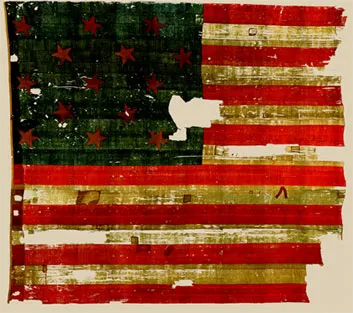
Many momentous and solemn events have involved or had the flag as a backdrop, including but not limited to the following events:
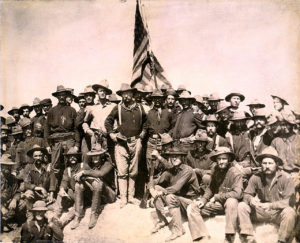
Colonel (and future US president) Theodore Roosevelt and his Rough Riders at the top of the hill which they captured, Battle of San Juan – 1898
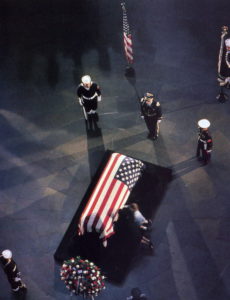
President John F. Kennedy’s flag-draped casket lying in state in the Capitol Rotunda November 1963
On July 20, 1969, Apollo 11 astronauts planted the American flag on the moon.
Watch the video of that event. Read more interesting facts about the flag planting on the moon here.

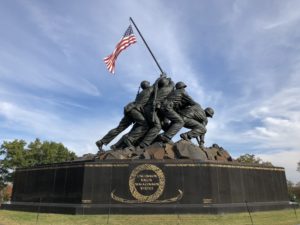
Commemorating one of the most memorable “flag” events in American history is the US Marine Corps Memorial in Arlington, Virginia.
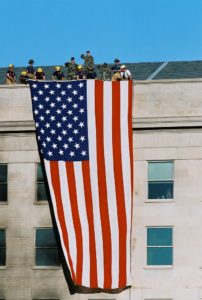


In September 2001, following the terrorist strikes on America, the flag was displayed prominently at the crash sites of the Pentagon, the World Trade Center, and UA Flight 93 in Shanksville, PA. NOTE: I was working at the Pentagon crime scene and present when the pictured flag was draped over the US military’s headquarters. I’ll always cherish this photo…
OTHER INTERESTING/USEFUL US FLAG FACTS
In 1885, Bernard Cigrand, a small-town Wisconsin teacher, originated the idea for an annual flag day to be celebrated across the country every June 14th. That year, he led his school in the first formal holiday observance. In 1916, President Woodrow Wilson officially established June 14 as Flag Day.
In the 1950s, when it seemed inevitable that Alaska would be admitted to the Union, designers began retooling the American flag to add a 49th star to the existing 48. Meanwhile, a 17-year-old Ohio student named Bob Heft borrowed his mother’s sewing machine, disassembled his family’s 48-star flag, and stitched on 50 stars in a proportional pattern. Heft sent the flag to his congressman, Walter Moeller, who presented it to President Eisenhower after both new states joined the Union. Eisenhower selected Heft’s design, and on July 4, 1960, the president and the high school student stood together as the 50-star flag was raised for the first time. The current design of the US flag is its 27th; the design of the flag has been modified officially 26 times since 1777.
According to the US Flag Code, flying or displaying the American flag upside down is a sign of disrespect. The only exception per the Flag Code is when it is used as a signal of danger or distress.
The Flag Code stipulates that the Stars and Stripes should not be used as apparel, bedding, or drapery.
The practice of draping coffins with the American flag is not reserved for military veterans and government officials. On the contrary, any burial may incorporate this tradition.
Etiquette calls for American flags to be illuminated by sunlight or another light source while on display.
Respectful burning of damaged flags according to established protocol is acceptable. During the Vietnam War era, some demonstrators burned American flags as an act of protest. The Flag Protection Act of 1968, enacted in response, made it illegal to burn or otherwise deface the Stars and Stripes. In two landmark decisions 20 years later, the Supreme Court ruled that the government couldn’t curb individuals’ First Amendment rights by prohibiting desecration of the US flag.
Perhaps the greatest play in major league baseball history involved a US flag. On April 25, 1976, outfielder Rick Monday of the Chicago Cubs saved the Stars and Stripes from being burned on the field at Dodger Stadium by two protestors. Monday raced over and grabbed the flag before the duo could light it on fire. Here’s the video of Monday saving Old Glory.
Care must be taken when flags are taken down from their poles to keep them from touching the ground.
When the flags of cities, states, localities, or groups are flown on the same staff as the American flag, Old Glory must always be at the peak.
The Flag Code prohibits adding an insignia, drawing, or other markings to the American flag.
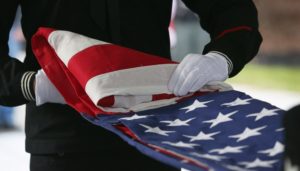
Ever wondered how to fold an American flag correctly? This short video demonstrates the process.
FINAL THOUGHTS
As you can see from the preceding, the American flag is deeply rooted in our country’s history. The American flag is more than just the symbol of the greatest nation God ever created, though it is that. There is NO other nation on the planet where citizens can exercise God-given rights, freedoms, and liberty as we Americans do. The flag represents the United States of America—that which unites us, not that which divides us.
As a final note, the American flag represents the ultimate sacrifice of our ancestors. Whether you are related to those heroes or not—like I am—never forget their sacrifices! Fly your flag today and every day, respectfully and in honor of them and our great nation!
Kevin
Sources: author & various public
